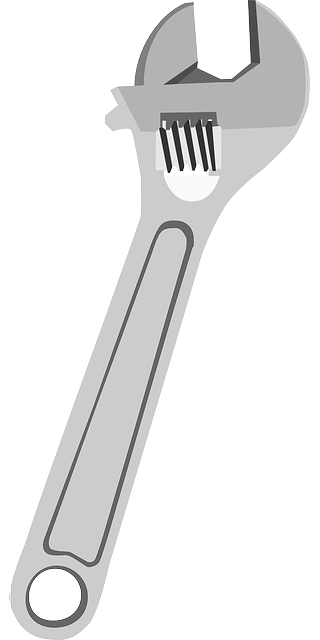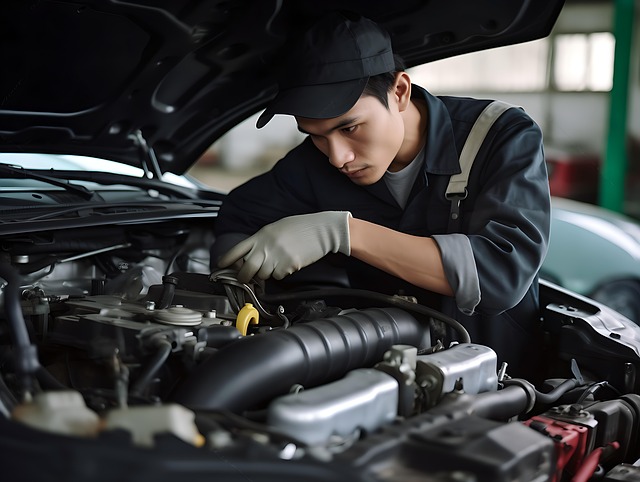Timely Updates: Unlocking Customer Satisfaction in Vehicle Repair Communication
Effective vehicle repair communication is vital for auto body shops and collision centers to achieve…….
Vehicle repair communication is a vital aspect of the automotive industry, serving as the bridge between vehicle owners, mechanics, and manufacturers. It involves a complex network of information exchange aimed at ensuring efficient, safe, and effective vehicle maintenance and repairs. In an era where technology is transforming every sector, the role of clear and streamlined communication in automotive service centers is more critical than ever. This article aims to provide an extensive overview, exploring various facets of vehicle repair communication, its global impact, economic implications, technological innovations, regulatory landscape, challenges, case studies, and a glimpse into its future trajectory.
Vehicle repair communication refers to the process of sharing information related to vehicle diagnostics, maintenance, and repairs between various stakeholders. It encompasses several key components:
The concept of vehicle repair communication has evolved significantly over time. Historically, automotive repairs were more straightforward, with mechanics relying on their expertise and basic tools. However, as vehicles became increasingly complex with the integration of electronic systems, the need for standardized communication became apparent. The early 1990s saw the introduction of OBD-II (On-Board Diagnostics) in vehicles, which enabled advanced diagnostics and communication between cars and repair shops. This marked a turning point, fostering the development of dedicated software and systems for vehicle repair communication.
Today, this form of communication is essential for several reasons:
Vehicle repair communication is a global phenomenon, but its implementation varies across regions due to differences in market conditions, regulatory frameworks, and cultural practices. The impact can be seen worldwide:
Several global trends are influencing the future of vehicle repair communication:
| Trend | Description | Impact |
|---|---|---|
| Digital Transformation | The automotive industry is undergoing a digital revolution, with cloud-based systems, mobile apps, and IoT (Internet of Things) devices enhancing communication and diagnostics. | Enables remote monitoring, real-time updates, and improved accessibility for both mechanics and customers. |
| Telematics and GPS Tracking | Integrating telematics into vehicles allows for location tracking, driver behavior analysis, and remote diagnostic capabilities. | Enhances fleet management, insurance services, and roadside assistance programs. Also provides valuable data for repair shops. |
| Connected Cars | Vehicles increasingly connect to the internet, enabling advanced diagnostics, entertainment systems, and over-the-air software updates. | Facilitates more complex communication protocols and data exchange between vehicles and service centers. |
| Artificial Intelligence (AI) and Machine Learning | AI-powered systems can predict maintenance needs, provide personalized recommendations, and automate certain diagnostic tasks. | Improves efficiency, reduces human error, and enables proactive maintenance. |
| Blockchain Technology | Blockchain has the potential to revolutionize parts tracking, ownership verification, and secure data exchange in the automotive industry. | Enhances transparency, security, and streamlines administrative processes related to vehicle repairs. |
The global vehicle repair communication market is experiencing steady growth, driven by factors such as increasing vehicle parc, rising demand for specialized diagnostic tools, and the need for efficient fleet management. According to a report by Grand View Research, the market size was valued at USD 3.2 billion in 2021 and is expected to grow at a CAGR of 7.5% from 2022 to 2030.
Investment in vehicle repair communication technology is being driven by:
Efficient vehicle repair communication contributes to the overall health of economic systems in several ways:
The field of vehicle repair communication has witnessed several technological breakthroughs:
These technological advancements have revolutionized the automotive service industry:
The future holds immense potential for technological innovations in vehicle repair communication:
Vehicle repair communication is subject to various policies and regulations that vary by region:
Regulatory frameworks play a crucial role in shaping the evolution of vehicle repair communication:
Despite its numerous benefits, vehicle repair communication faces several challenges:
Criticisms of vehicle repair communication often revolve around:
Tesla, a pioneer in electric vehicle (EV) technology, has developed a robust communication network for its vehicles. Every Tesla car is equipped with a high-speed WiFi connection and advanced diagnostics. The company’s cloud platform enables remote software updates, real-time data monitoring, and over-the-air repairs. This system allows Tesla to provide personalized service experiences and quickly address technical issues, fostering customer loyalty.
Volkswagen implemented a digital transformation initiative across its global service network. They introduced a cloud-based work order management system, enabling mechanics to access real-time vehicle data, parts inventory, and diagnostic information from any location. This streamlined process reduced repair times, improved efficiency, and enhanced customer satisfaction. The project was a success, leading to cost savings of millions of euros annually.
Toyota has developed an AI system that uses machine learning algorithms to predict potential vehicle issues based on historical data. This proactive approach allows service centers to contact owners proactively, offering preventive maintenance solutions. The system has been successful in identifying and resolving problems early, reducing the likelihood of more significant, costly repairs.
The future holds immense growth opportunities for vehicle repair communication:
Several emerging trends will shape the industry:
To capitalize on these prospects, stakeholders should:
Vehicle repair communication is a dynamic field that has transformed how we maintain and repair vehicles. From its humble beginnings as a basic diagnostic tool, it has evolved into a complex ecosystem of interconnected systems, data exchange, and advanced technologies. This article has explored various aspects, from historical context and global trends to technological advancements and regulatory frameworks.
The future of vehicle repair communication is promising, with emerging trends like AI, IoT, and blockchain poised to revolutionize the industry further. As vehicles become increasingly connected and autonomous, efficient communication will be essential for ensuring safe, reliable, and personalized vehicle maintenance experiences worldwide. By addressing challenges and leveraging opportunities, stakeholders in this field can empower mechanics, enhance customer satisfaction, and contribute to a more sustainable future of transportation.
Q: How does vehicle repair communication benefit customers?
A: Customers benefit from faster, more accurate repairs, personalized service recommendations, and reduced downtime for their vehicles. They also have access to their vehicle data, enabling them to make informed decisions about maintenance.
Q: Are there any security risks associated with modern diagnostic tools?
A: Yes, as systems become more connected, cybersecurity threats increase. However, robust security measures, including encryption and access controls, can mitigate these risks. Regular security audits are essential to ensure ongoing protection.
Q: How can small service centers afford advanced communication systems?
A: Small businesses can consider rental or subscription models for specialized software, making it more affordable. Cloud-based solutions are also scalable, allowing them to start with basic features and upgrade as needed.
Q: What role does vehicle repair communication play in the shift towards electric vehicles (EVs)?
A: EV maintenance requires specialized diagnostic tools due to unique battery and charging infrastructure considerations. Advanced communication systems facilitate remote support and software updates for EVs, ensuring their optimal performance.
Q: How will 5G networks impact vehicle repair communication?
A: 5G networks will enable faster data transfer rates, supporting real-time diagnostics and collaboration between mechanics and manufacturers even more effectively. This will lead to quicker problem resolution and improved remote support.

Effective vehicle repair communication is vital for auto body shops and collision centers to achieve…….

Effective vehicle repair communication strategies, focused on transparency and clear language, build…….

Effective vehicle repair communication is a powerful strategy for auto body shops to build strong cu…….

Mobile apps are transforming vehicle repair by streamlining scheduling, appointment booking, and par…….

Effective vehicle repair communication is crucial for auto service centers to build trust with clien…….

TL;DR: Clear communication is key in vehicle repair services, ensuring all parties understand needs,…….

Vehicle repair communication is vital for successful auto service, fostering trust through clear exp…….

Vehicle repair communication is a vital strategy for auto shops to build trust with customers. By pr…….